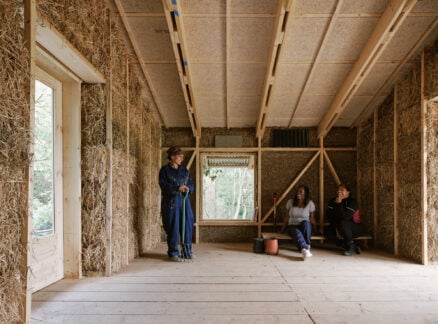July 7, 2014
Design and Corporate Social Responsibility
Is it a matter of morals or a robust bottom line? Can it be both?
A recent presentation at the Regional Leaders of Western France led me to reflect on the relationship between corporate social responsibility and designand I wondered about role that of the designer. I asked myself, what if design were synonymous with “sustainable business?”
A few years ago, at a Denver conference, the chief design officer (CDO) of a global firm specializing in hygiene products said that the eco-design process had done away with excessive packaging for dental care items. The item, in its entirety, he said, underwent massive changes in its shape, ergonomics, cost, and image, in addition to the material used as well as the graphic design.
This initiative and the resulting transformations, factor into what is better known as “corporate social responsibility” (CSR) which strives to create awareness and action around a company’s operations, their impact on the environment, and the “presence and leverage needed to confront the challenges linked to sustainable development,” as the CDO noted.
Eliminating excess packaging is synonymous with “saving” acres of trees, therefore, the right thing to do. Yet when asked what price tag was placed on the new presentation, the CDO talked about how much money he ended up saving the company. So, was his initiative carried out to benefit the environment, out of necessity, or was it about gaining public approval?
Hotels, too, are hopping on the eco-bandwagon, asking guests to be less wasteful and reuse bath towels to cut back on water consumption and anti-ecological wash cycles. Is this out of necessity or is management looking to pocket a bit more change and beef up its bottom line? Do these practices represent social responsibility or simply judicious decision-making?
A company’s number one priority is to generate added value; the impression that its initiatives are padded with eco-fueled intentions doesn’t really hold water. A company is a well-oiled machine designed to produce and sell. And when it sells, it does so with itself in mind. Although there is little room for morality, ultimately things pan out positively for all parties. Added value is nothing other than the financial benefits, which are to be redistributed fairly, first to company shareholders, then to society.
But the reality proves otherwise. The added value is not redistributed as fairly or as equally as we would like to think. “Riches to riches,” as the saying goes, illustrates to what extent inequalities are taking a turn for the worse. The gap between the rich and the poor is growing. Wealth is limited to a select few. Politicians are at a loss when it comes to reintegrating some kind of balance into society. Marx predicted the collapse of capitalism through the working class; Schumpeter predicted it through the intellectuals. The irony of it all may be that the today’s financial gurus, who once depended on this moneymaking machine, may end up driving capitalism into the ground.
Yet generating added value needs to happen. This is the corporate social responsibility. For companies to put the environment first, they first need to be competitive. If they can’t generate added value, the machine is bound to shut down entirely.
Once the numbers are met and financial gain is in place, they can focus on the environment, sustainable development, and earth-friendly deeds to help save the planet. CSR is an opportunity for a company to align its product offering with new, “greener” markets aimed at defending and demanding “cleaner,” “safer,” and more “sustainable” products.
Stagnating is not an option for businesses. They need to keep their eyes on new challenges and innovative solutions, and adapt to a world in a constant state of flux. As expressed by philosopher Bernard Stiegler, this constant state of flux goes hand-in-hand with a society whose products and services are driven more and more by consumers and the decisions they make.
Businesses need to keep pace with the challenges linked to consumer behavior and shopping trends. What is in store for companies whose production and sales models depend on new markets when the thought of replacing a dishwasher, car or even copy machine is losing momentum with each passing day? Retail industries are preparing to shift from production of goods to services, in an attempt to avoid becoming obsolete.
Social responsibility gives everyone the opportunity to reflect on the unknowns embedded in economic change, restructuring, and sustainability.
It is the designer who fuels this societal endeavor. Design takes root from the desire to restore humanity and human input in industry, although the well-oiled machine and scientific-production have disrupted that endeavor.
Designers reflect on the various purposes of objects, bring them to life, and give them meaning. The designer role involves making adjustments while improving a product’s functionality. By its very nature, the design process is humanistic. As Marx said, “Philosophers have only interpreted the world, in various ways. The point, however, is to change it.” What should this change look like?
We’re on our way to solving the mystery of design and the fruits of its labor. The combination of a capitalist system confronted with a systemic crisis and business needing a radical facelift enables the designer to see an economic potential from a wide angle, and also position design with people, progress, and especially the environment. What is good for the environment can also be good for businesses and the economy as a whole.
CSR is in the designer’s DNA and the driving force behind her every move.
“Businesses in the 20th century asked themselves the question of what is technologically possible and economically profitable; those of the 21st century need to ask themselves what makes sense,” writes the rector of Kolding School of Design in Denmark, Elsebeth Gerneer Nielsen.
Corporate social responsibility means making sense of the far-reaching changes to come. And in bringing companies on board, discerning their needs, and guiding them accordingly, the designer is pivotal. For innovation to fully embody all that is ethical, its purpose needs to surpass financial gain, an aspect that tends to overpower the real priorities, not to mention a more lucid thought process.
CSR is a fabulous vehicle for generating added value. But let’s be careful not to confuse “obligation” with “bottom line gains.” Toyota doesn’t manufacture hybrid vehicles because it feels it has to, but rather because the “ecological conscience” of its market is just starting to surface, a result of which unveils an extremely promising future. There is no reason to hang our head in shame as we admit this. Let’s not go on the hunt either for virtues or morals in a context where there aren’t any. Toyota boasts millions of jobs worldwide, and that alone, is proof of that they have taken a step in the right direction–unless a car-free world is in the works… Hope springs eternal.
Christian Guellerin has been president of Cumulus, the International Association of Universities and Schools of Design, Art and Media since 2007. Under his leadership the organization grew from 80 to 178 establishments in 44 countries in 2008; today they’re expanding to China and India. He is also the executive director of the Ecole de design Nantes Atlantique, which trains professionals to create and innovate for socio-economic development, with an interface between technology, economics, and the sciences. He writes frequenly on design and pedagogy and teaches in several schools and universities in France and abroad.
Read more posts from Christian Guellerin here.





